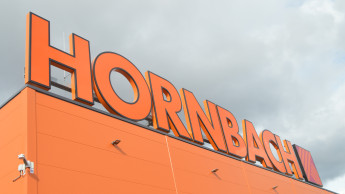The DIY and gardening market is forecast to grow by 37.6 per cent over the 2002-2007 period, taking total spending to £ 19.3 bn (€ 30.3 bn) – this equates to a nigh on doubling of total spending since 1997. According to Verdict Research, annual sales growth will average 6.6 per cent over the next five years – significantly ahead of the forecast 4.2 per cent increase across the retail industry as a whole. DIY and gardening will be the UK’s fastest growing major retail sector over the next five years
Furniture, floorcoverings and homewares
There will be a variety of product categories as retailers introduce more higher price lines to explore their pricing headroom potential. Additionally, there will be a developing focus on selling ideas and not just products. A key factor behind the increasing share of total spending will be DIY and gardening retailers making increasing inroads into the furniture, floorcoverings and homewares sectors.
While purists may scoff at the ability of ‘dusty’ sheds and warehouses to sell higher ticket furniture products, for example, DIY stores have a number of key adventages working in their favor. They have a far greater ability to leverage their greater footfall levels, large selling spaces and the complementary nature of their home enhancement product offer over other home-focused retailers.--nextpage--
Importantly, the great advantage for DIY retailers is that this is a one-way street – no specialist furniture retailer will be able to encroach on their core DIY territory given the buying scale and product authority required. In this respect, the DIY chains are not unlike grocers with their increasing inroads into non-food being supported from the platform of a highly defensible core business with its unique and specialised requirements. However, as with the major grocers, the DIY players will still need to acquire an enhanced set of sourcing, operational, merchandising and selling skills to maximise returns from a softer product offer expansion.
Differentiation strategies
Reinforcing the growing moves towards offering consumers a broader product and service proposition will be the competitor differentiation strategies on the part of Homebase and Focus Wickes as they battle with the strengthening market leadership of B&Q. Verdict estimates that B&Q’s market share was 24.7 per cent in 2002, larger than the combined shares of Homebase (12.0 per cent) and Focus Wickes (11.8 per cent; trade sales are excluded).
B&Q has a highly potent trading formula in its Warehouse format and continuing strong physical expansion will ensure it claims the lion’s share of the forecast market growth of £ 5.3 bn (€ 8.3 bn) between 2002 and 2007. However, a key point is that overall market growth should be sufficiently healthy to enable all three of the major combatants to grow more or less simultaneously.

 Menü
Menü
















